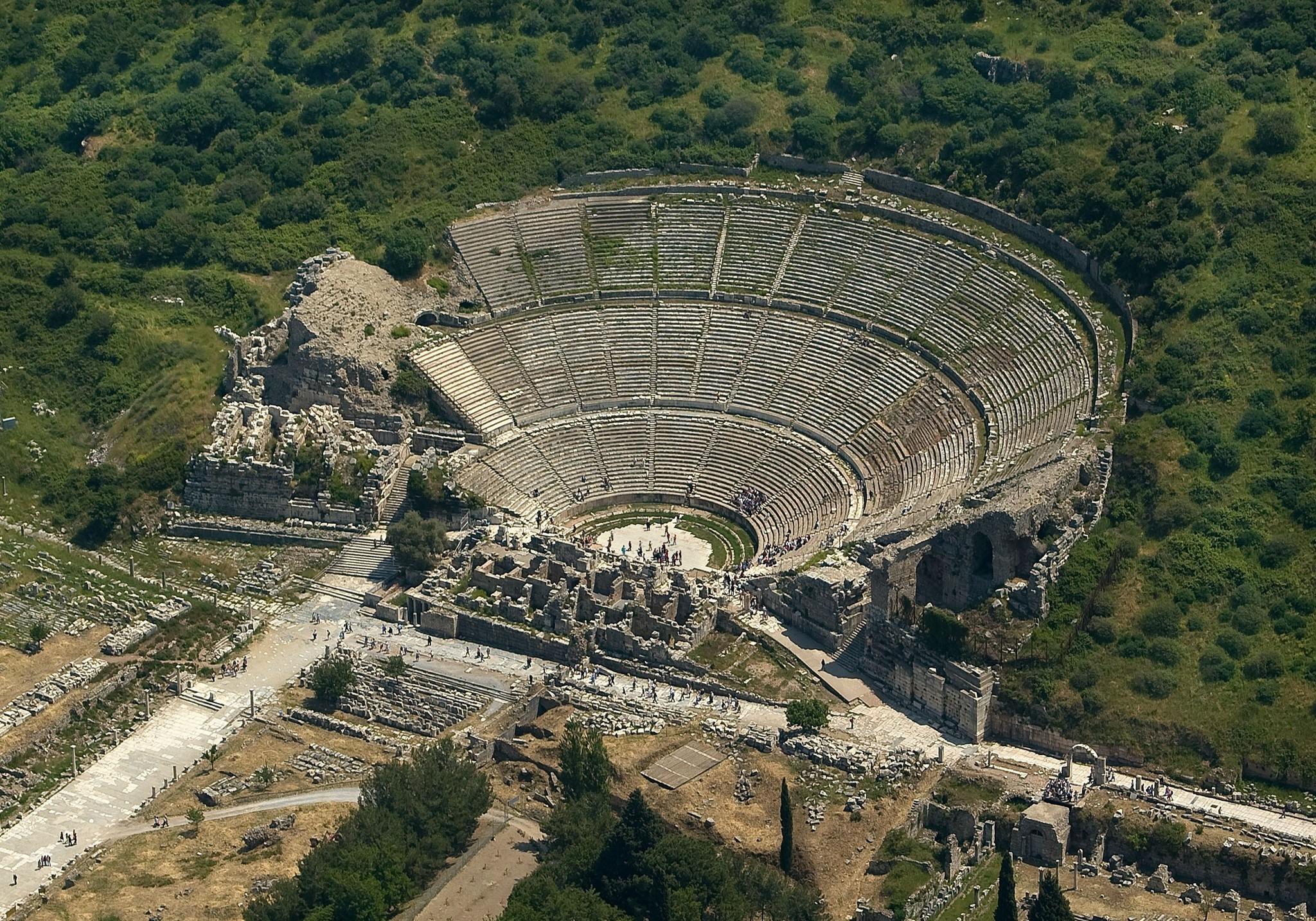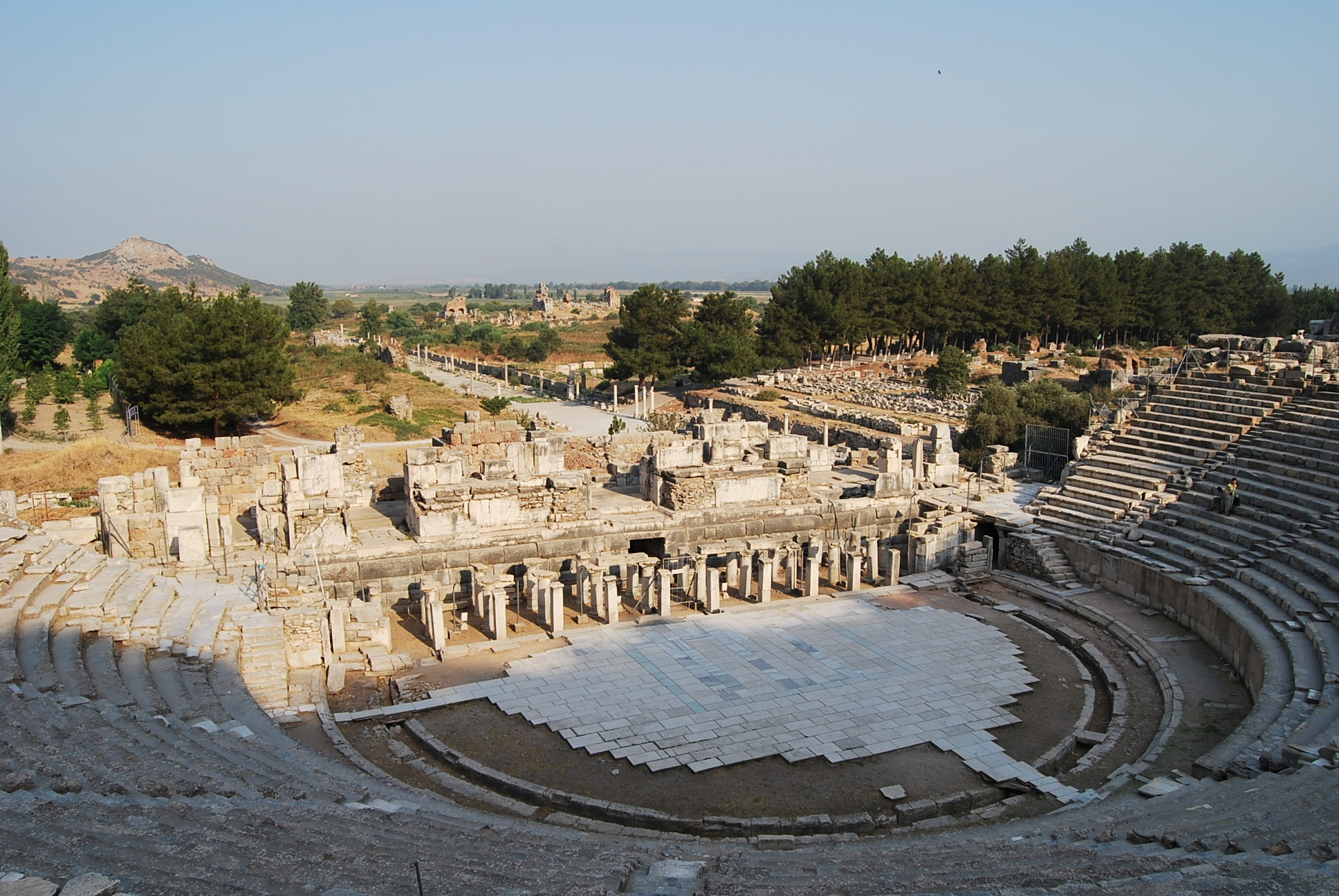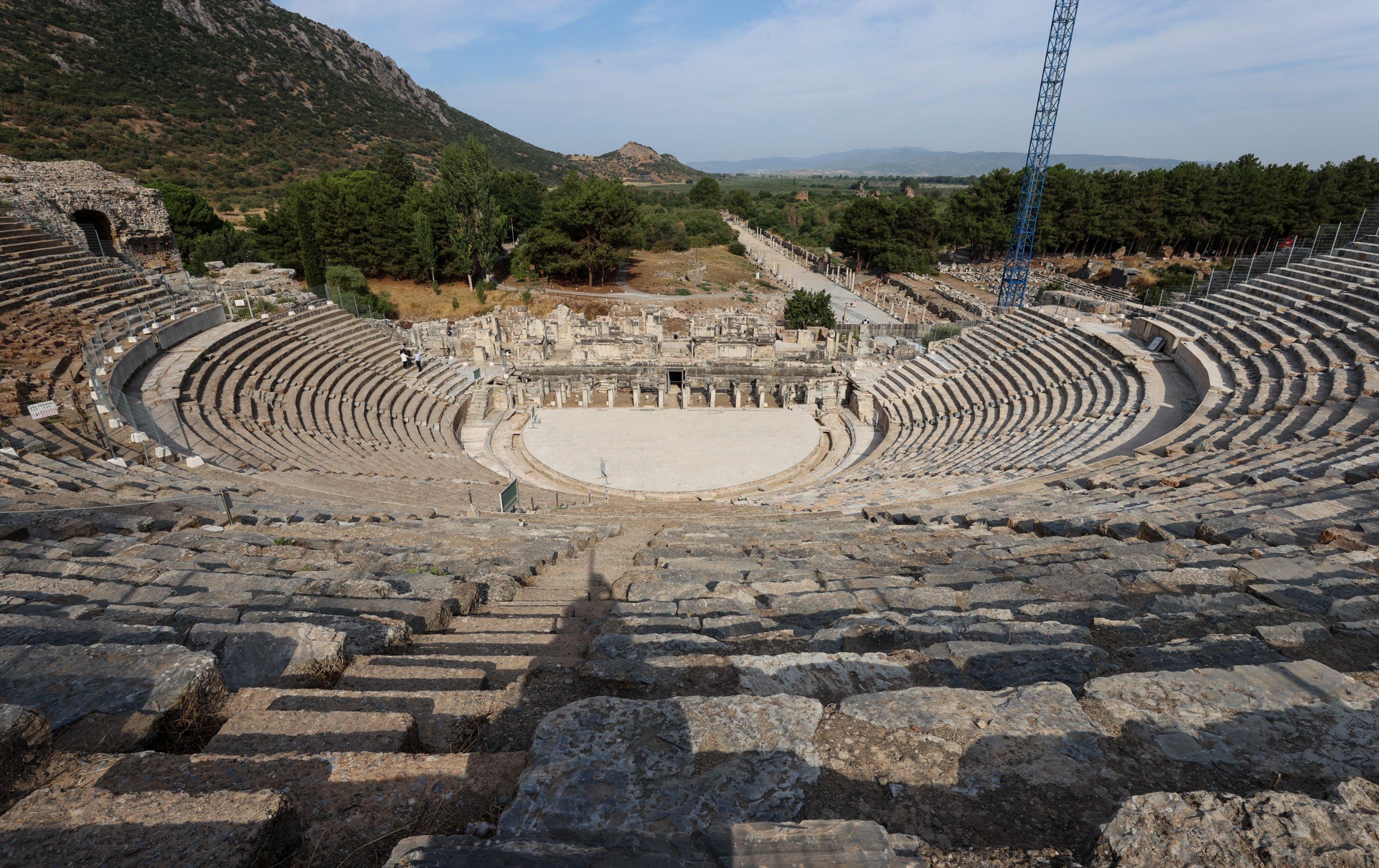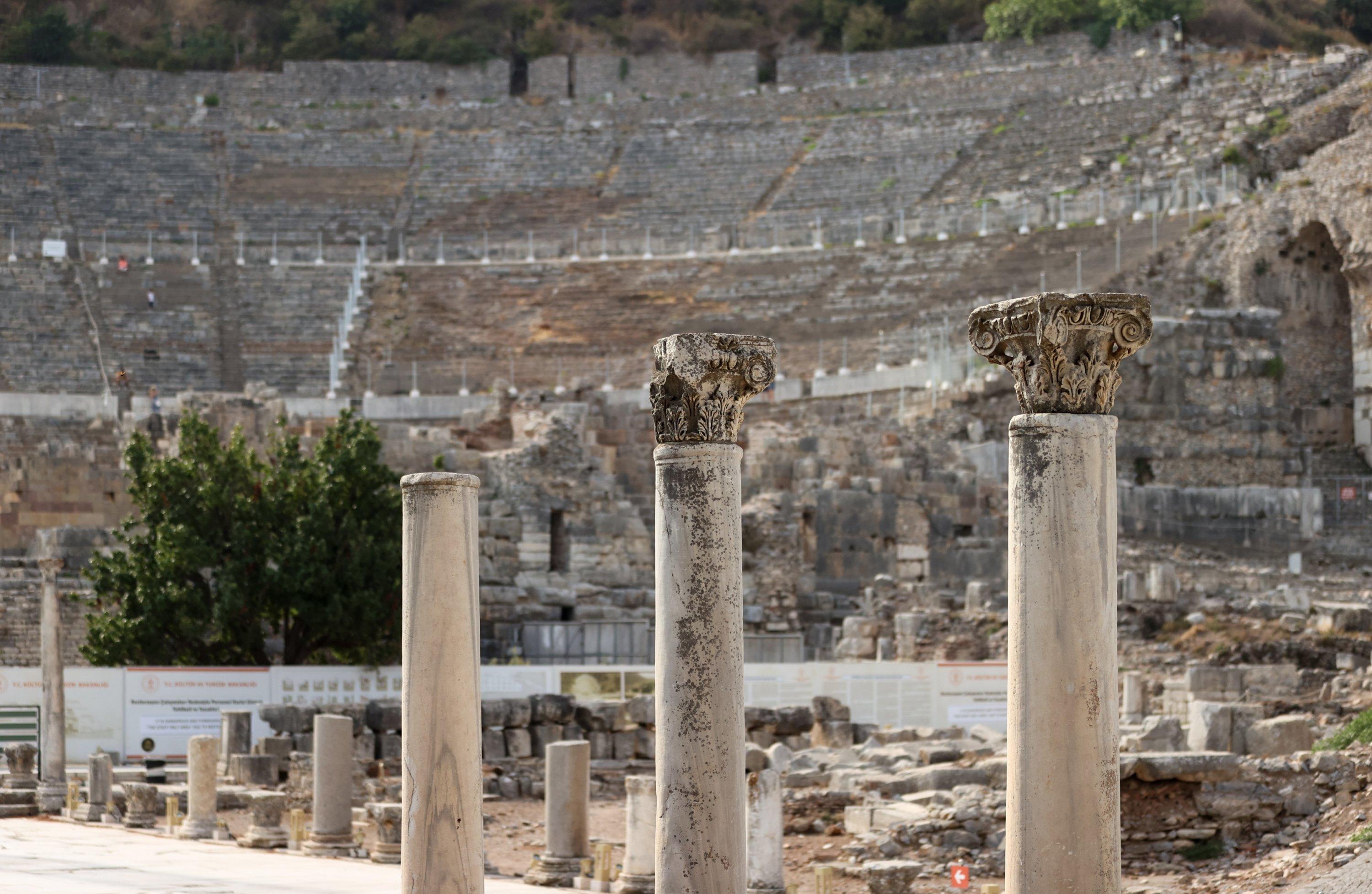The Great Theatre in Ephesus stands as a captivating testament to the architectural brillianceThe Enchanting Ancient Theater of Ephesus: Unveiling its 2,300-Year Legacy and cultural richness of the ancient world. Nestled in the historic city of Ephesus, located in present-day Turkey, this remarkable structure has withstood the test of time and continues to awe visitors from around the globe with its grandeur and historical significance.

The Great Theatre in Ephesus, or the Ephesus Theatre, was constructed during the Hellenistic period in the 3rd century BCE. It was later expanded and renovated during the Roman period, showcasing the evolution of architectural styles and influences over the centuries. With its capacity to hold approximately 25,000 spectators, the theater was one of the largest of its kind in the ancient world.

Ephesus, once a bustling port city and an important center of trade and culture, played a vital role in the ancient world. The Great Theatre was a focal point for various forms of entertainment, including theatrical performances, music concerts, and political gatherings. The theater witnessed significant events and personalities, such as the speeches of notable figures like St. Paul during his missionary travels, making it an important cultural and historical landmark.

The Great Theatre’s architectural design is a testament to the ingenuity and engineering prowess of ancient civilizations. Built into the side of Mount Pion, the theater takes advantage of the natural topography, providing excellent acoustics and ensuring good visibility from all seating areas. The seats are arranged in a semicircular fashion, forming a perfect harmony with the surrounding landscape.
The stage area, known as the skene, was an elaborate structure adorned with ornate decorations and sculptures. The theater’s facade was embellished with intricate reliefs and friezes, depicting mythological scenes and honoring the gods and emperors of the time. Today, some of these remarkable sculptures and artworks can still be admired in the nearby Ephesus Museum.

Stepping into the Great Theatre in Ephesus is akin to traveling back in time. Visitors can stroll through the grand entrance, imagining the anticipation and excitement that once filled the air. As they ascend the tiers of stone seats, the magnitude of the theater becomes apparent, offering panoramic views of the surrounding ruins and the ancient city of Ephesus.
To this day, the Great Theatre serves as a venue for performances, bringing the ancient space back to life. Concerts and theatrical productions are occasionally held, allowing modern audiences to experience the acoustics and ambiance that enraptured audiences thousands of years ago.
Preserving and protecting this remarkable archaeological site is of paramount importance. Conservation efforts have been undertaken to safeguard the Great Theatre and other ancient structures in Ephesus. Archaeologists, historians, and restoration experts work diligently to maintain the integrity of the theater, ensuring that future generations can continue to marvel at its magnificence.

The Great Theatre in Ephesus remains an enduring symbol of human creativity and the pursuit of artistic expression. Its architectural grandeur, historical significance, and the captivating experiences it offers to visitors make it an unmissable destination for those seeking to delve into the wonders of the ancient world. As this timeless marvel continues to stand tall, it reminds us of the indomitable spirit of human ingenuity and the enduring legacy of our ancestors.

